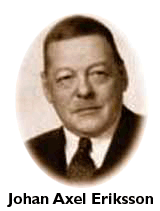History - Autoclaved Aerated Concrete |
|
Autoclaved Aerated Concrete (AAC) is a unique building material made from quartzite silica sand, water, lime, cement and anhydrite, which are processed with a gas-forming aluminium paste, to create a highly porous, lightweight, insulating mineral product. Early Attempts Since Roman times, lightweight aggregates and foaming agents have been employed to reduce the weight of concrete. However, unlike these foamed or light aggregate mixes, true aerated concrete relies on the alkaline binder (lime & cement) reacting with an acid to release gases, which remain entrained in the material. The first attempt to produce aerated concrete was a method patented by a Czechoslovakian, Mr E. Hoffman, in 1889. The aeration was produced by carbon dioxide generated in the reaction between Hydrochloric Acid and limestone. Powdered Aluminium and Calcium Hydroxide were used as aeration agents in cementicious mixtures by Aylsworth & Dyer in the USA in 1914. In 1917, a Dutch patent was registered using yeast as an aerating agent. Later patents involved the reaction between zinc dust and the alkalis in the cement mixture, Hydrogen Peroxide, Sodium or Calcium Hypochlorite and air foaming. The use of metal powders as a Hydrogen gas forming agents was developed further by Grosahe in Berlin in 1919. Aluminium powder was settled upon as the medium which produced the most even, controllable aeration by the release of hydrogen bubbles in a consistent size range. Most of these air cured aerated concrete techniques resulted in low compressive strength, crumbly material, generally unfit for structural applications. Autoclaving Process is Used
First Production Dr. Eriksson patented his 'gas concrete', known locally as 'poren betong', in 1924. It took a few years for him to find a manufacturer prepared to invest in a plant and in November 1929, Y-TONG was first licensed and manufactured by building product producer, Karl August Carlen, in the town of Yxhult, Sweden. Y-Tong is an abbreviation of the town's name and the Swedish word for concrete- 'betong'. This plant was operational until the late 1960's. The development of an autoclaved aerated concrete industry, using local raw materials, began producing what were known as 'warm stones' due to the thermal resistivity provided by the aerated material. |
 The first documented attempt at autoclaving aerated concrete was in 1923 in Sweden. The discovery was almost accidental. An architectural science lecturer, Dr Johan Axel Eriksson, then assistant professor for Building Techniques at the Royal Institute of Technology in Stockholm, was working on a variety of aerated concrete samples. Running short of time, he decided to speed up the curing process on a porous mass of burnt shale limestone, water and aluminium powder by placing the sample in the laboratory autoclave. The porous mass survived the overnight autoclaving and the resulting cured brick possessed greatly increased strength and a new, stronger crystalline composition. In the heat and pressure of the steam curing, the silica and lime components had become fused into a form of calcium silicate hydrate crystal, similar to the volcanic rock, known in nature as Tobermorite. Tobermorite is usually found in conjunction with basalt and was named after the spot where it was first found, on the Scottish Island of Mull near the village of Tobermory. Modern AAC production aims to produce tobermorite crystal structures with 11 angstrom plate matrix size.
The first documented attempt at autoclaving aerated concrete was in 1923 in Sweden. The discovery was almost accidental. An architectural science lecturer, Dr Johan Axel Eriksson, then assistant professor for Building Techniques at the Royal Institute of Technology in Stockholm, was working on a variety of aerated concrete samples. Running short of time, he decided to speed up the curing process on a porous mass of burnt shale limestone, water and aluminium powder by placing the sample in the laboratory autoclave. The porous mass survived the overnight autoclaving and the resulting cured brick possessed greatly increased strength and a new, stronger crystalline composition. In the heat and pressure of the steam curing, the silica and lime components had become fused into a form of calcium silicate hydrate crystal, similar to the volcanic rock, known in nature as Tobermorite. Tobermorite is usually found in conjunction with basalt and was named after the spot where it was first found, on the Scottish Island of Mull near the village of Tobermory. Modern AAC production aims to produce tobermorite crystal structures with 11 angstrom plate matrix size.